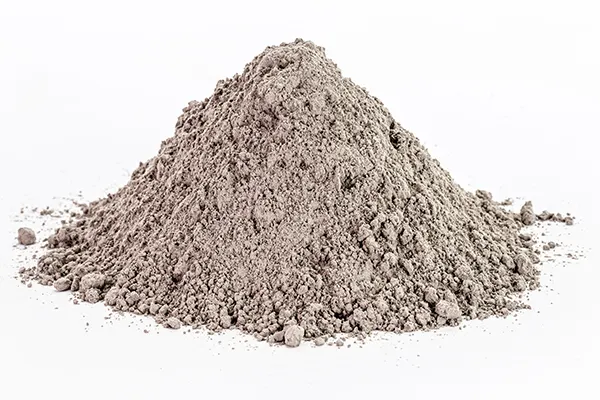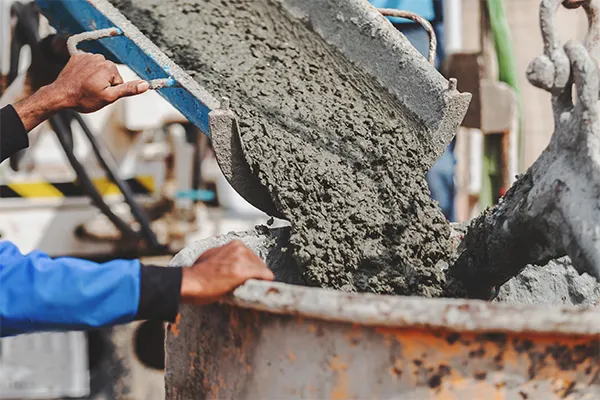You require a considerable amount of building materials for the construction of your dream home. However, some materials are used in all types of construction. For basic house construction, you require cement, sand, and aggregates to make concrete, cement plaster, and mortar. You need bricks for masonry work, though you can also use concrete blocks instead of bricks. Steel bars and ties are necessary for reinforcement in the RCC structure. You also need tiles and paint for the finishing work of your house construction process.
As we all know, building materials can make up as much as 60% of the overall cost of construction. So, if you are building a house, it requires an in-depth understanding of and analysis of the qualitative criteria of the materials. Hence, in this blog, we explore one of the key construction materials- cement. How much cement is required for a 1000 sq. feet area of your construction? Before jumping into details, let’s understand what cement is and its importance.
What is Cement & Its Importance?

In construction, cement is a binder- a material that binds other materials together by setting, hardening, and adhering to them. Cement is one of the key components of RCC concrete and ordinary cement concrete. When it is combined with sand and gravel, it creates cement mortar, which is primarily used for plastering and brickwork or blockwork, which means brick/block wall laying. When mixed with sand, aggregate and water, it makes concrete, which is used for casting slabs, RCC structures, bridges, roads, dams, pre-cast concrete elements, etc.
There are different types of cement available in the market, such as,
- Ordinary Portland Cement (OPC)
- Portland Pozzolana Cement (PPC)
- Rapid Hardening Cement
- Extra Rapid Hardening Cement
- Quick Setting Cement
- Low Heat Cement
- Sulphate Resisting Cement
- Portland Slag Cement (PSC)
- High Alumina Cement
- White Cement
- Coloured Cement
- Air Entraining Cement
- Hydrophobic Cement
- Masonry Cement
- Expansive Cement
- Oil Well Cement
How Much Cement is Required for a 1000 Sq. Feet Area

If you calculate the cost of the construction materials, cement can make up as much as 16 percent of the total cost of the materials. If you do cement volume calculation for construction, around 0.4 cement bags are required for every square foot of construction for a house. So, the result will be = 1000 * 0.4 = 400 Cement bags.
It’s rough and a basic idea about the cement requirement for construction. But remember, if you want a precise amount that how much cement required for your 1000 sq feet area, you have to consider the following things-
- Type of your structure means complete RCC structure or normal one
- Type of the cement you used in your construction like OPC, PPC
- Grade of the concrete you used, such as M20 or M30
- Height and length of your beams and columns
- Your selected type of foundation, etc.
Once you determine all the above things, you must understand the requirement of concrete, which means how much concrete you need for your construction. To determine the total wet volume of concrete, you must calculate your footing size, column size, plinth beam size, roof wall beam size, and roof slab size. Based on the wet volume, you can calculate the dry volume of concrete and the precise cement calculation for house construction.
How much cement required for 1000 sq ft slab 5 thickness
We can follow a step-by-step approach to calculate the amount of cement required for a 1000 sq ft slab with a thickness of 5 inches. For this calculation, we’ll assume the mix ratio is 1:2:4 (1 part cement, 2 parts sand, 4 parts aggregates).
Step 1: Convert Slab Area and Thickness into Volume
First, convert the thickness from inches to feet:
Thickness in feet = 5 /12 (inches/foot) = 0.4167 feet
Now, calculate the volume of concrete required:
Volume of slab=Area×Thickness
Volume of slab=1000 sq ft×0.4167 feet=416.7 cubic feet
Convert the volume to cubic meters:
Volume in cubic meters = 416.7/35.3147 = 11.80 cubic meters.
Step 2: Calculate the Dry Volume of Concrete
To account for the voids and wastage in the mix, increase the volume by approximately 50%:
Dry volume = 11.80 cubic meters×1.54 = 18.17 cubic meters
Step 3: Calculate the Cement Volume
For a mix ratio of 1:2:4, the total parts are:
Total parts=1+2+4=7
The volume of cement required is:
Cement volume = (Dry volume×Cement part)/Total parts
Cement volume = (18.17 cubic meters×1)/7 = 2.596 cubic meters.
Step 4: Calculate the Number of Cement Bags
The volume of one bag of cement (50 kg) is:
Cement has a density of 1440 kg/cubic meter. This means that one cubic meter of cement weighs 1440 kg. When you have a specific weight of cement (e.g., 50 kg, which is the standard weight of one bag of cement), you need to calculate the volume that this weight occupies.
The volume of 1 bag of cement = 50/1440 = 0.0347 cubic meters.
Now, calculate the number of cement bags required:
Number of cement bags = 2.596/0.0347 = 74.82 bags.
So, the cement required for a 1000 sq ft slab 5 thickness is 75 bags.
Importance of the Material Estimation
It’s essential to understand how to estimate the cost and quantity of cement and other Construction Material Quantity Estimation for 1000 sq.ft, to get the best outcome and accurate budget planning. Your build-up area indicates how much materials are required for construction, and the estimates may vary from different contractors or builders and their locations. For example, purchasing cement from local vendors through local contractors may be expensive compared to the in-house material supply chain of a standard construction company like Brick&Bolt.
Conclusion
In summary, you need to use various materials to build your dream home, and cement is an essential component of them. It functions similarly to the glue that holds other construction materials together. Knowing how much cement you’ll require is crucial because it can account for a significant portion of the total cost. Hence, the appropriate quantity estimation of cement is a critical component of your budget planning. Therefore, knowing these fundamentals about cement and building supplies will help you stay within your budget and make wise decisions if you plan to build a home.
FAQs
For a 1000 sq ft slab with a thickness of 4 inches, approximately 62 to 65 cement bags (50 kg each) are required, assuming a standard mix ratio of 1:2:4 (cement:sand:aggregate). The exact number may vary based on the mix design and slab thickness.
The coverage of 1 bag of cement (50 kg) depends on the mix ratio and thickness of the application. For plastering with a 1:4 mix ratio at a thickness of 12 mm, 1 bag of cement typically covers about 40 to 45 sq ft. For concrete with a 1:2:4 mix ratio and 4-inch thickness, 1 bag of cement can cover approximately 16 to 20 sq ft. The exact coverage may vary based on factors like surface type, wastage, and workmanship. Always calculate based on specific project requirements for accurate estimates.
For a 300 sq ft slab with a standard thickness of 4 inches and a 1:2:4 mix, approximately 18 bags of cement (50 kg each) are required. This estimate may vary based on the specific mix design and slab thickness.

